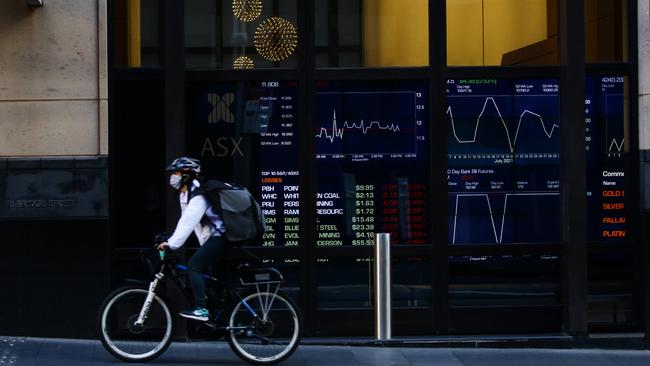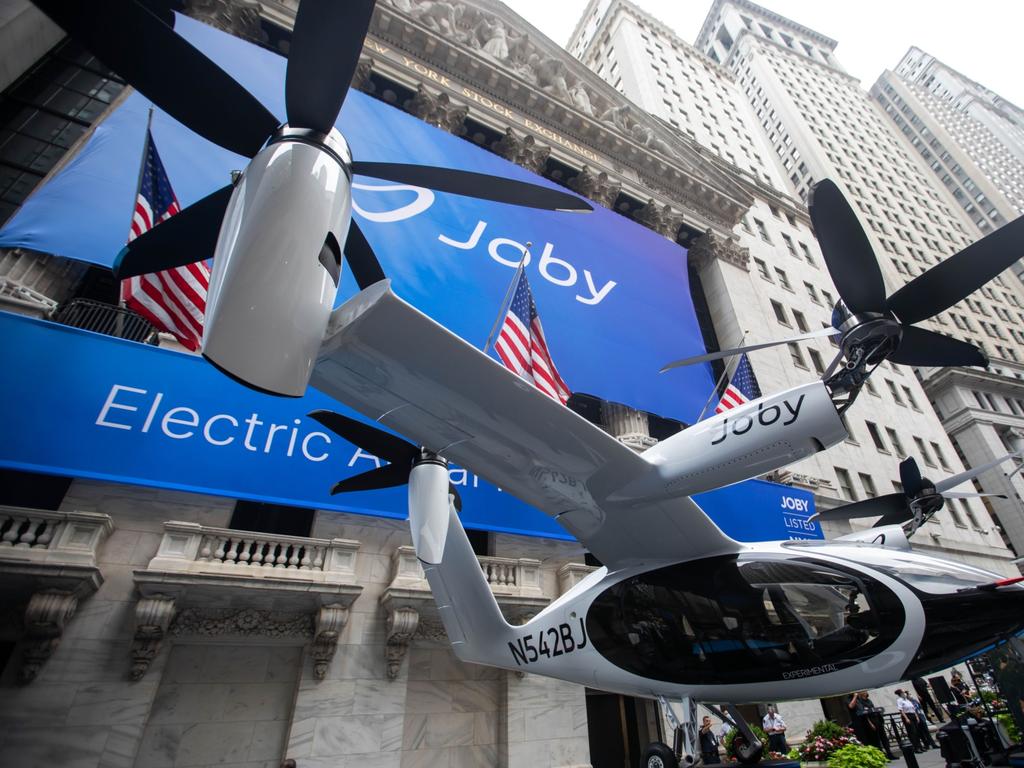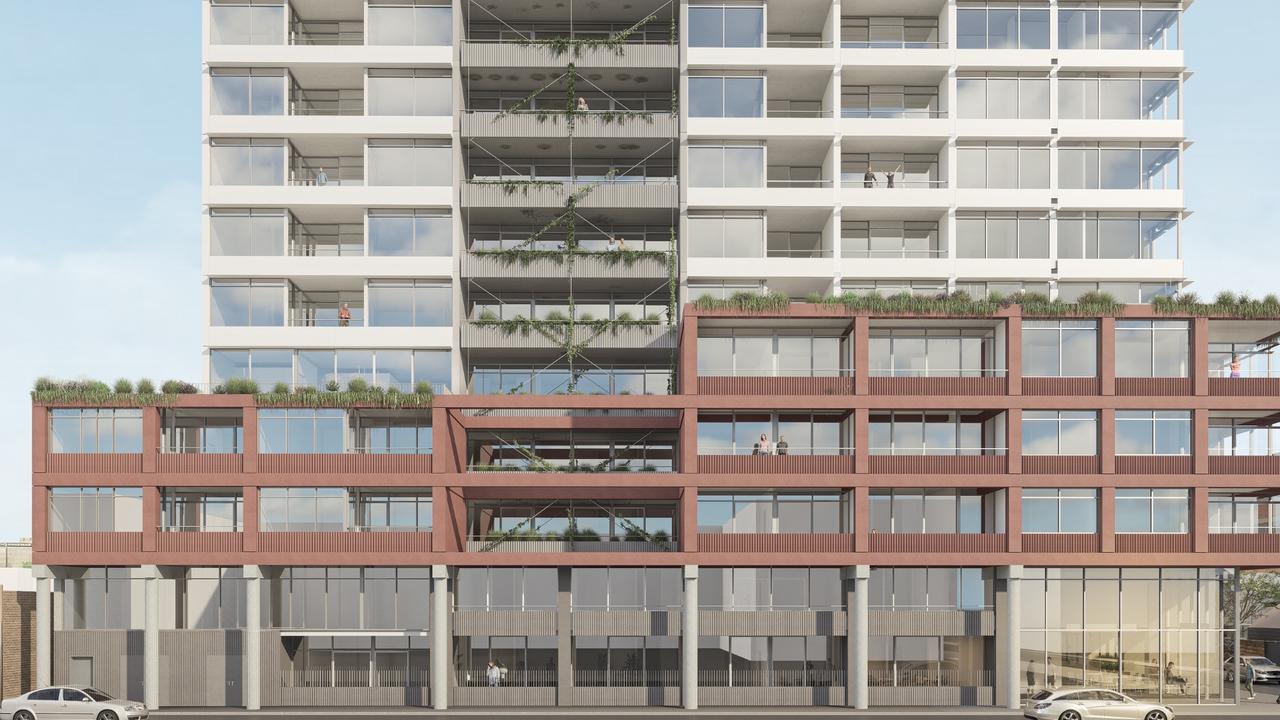Little upside on ASX 200 as banks, miners run out of steam
A lack of positive momentum in the two biggest sectors of the Australian sharemarket suggests it will trade sideways to down for the coming week.

Business
Don't miss out on the headlines from Business. Followed categories will be added to My News.
A lack of positive momentum in the two biggest sectors of the Australian sharemarket suggests it will trade sideways to down while investors await the outcome of the FOMC meeting next week.
Ironically, the local bourse was supported on Monday by slight gains in some of the banks and iron ore miners, with the ASX 200 rising 0.3 per cent as US futures bounced.
NAB fell 1 per cent as Credit Suisse downgraded the bank, even as Bell Potter upgraded it.
But while Macquarie Group took off on stronger-than-expected earnings guidance last week, the banks have mostly been trendless for a few months.
NAB hit a 22-month high of $28.88 early this month as JP Morgan’s Andrew Triggs favoured its outlook relative to its peers. However, it remains to be seen if NAB can stay above former resistance from the May peak at $27.84, particularly if other brokers downgrade after recent share price gains.
In downgrading NAB to neutral, Credit Suisse’s rating for the whole sector moved back to neutral. Credit Suisse analyst Jarrod Martin noted the banks were trading on one-year forward price-to-earnings multiple of 15.2 times, which was 19 per cent above their four-year average of 12.8 times.
Traditionally, banks trade on 12 times because they’re inherently more risky than the broader market, despite their somewhat protected status.
Perhaps it’s something to bear in mind if Covid-19 starts to look like an ongoing headwind.
The banks were on a p/e multiple of 86 per cent of the market, versus a four-year average of 73 per cent.
“While we think the sector provides stable earnings, incremental upside from here appears less than recent history and even though there is still further reserve releases and capital management to come, much appears to be in market forecasts,” Mr Martin said.
His only outperform-rated bank was Westpac.
CBA trades on a p/e ratio of 19.4 times, a 31 per cent premium to the sector.
“CBA is taking advantage of the distraction of competitors to further enhance its technology supremacy,” Mr Martin said. “However, this is likely to see near term expense pressures while others emerge from their issues.”
Still, Bell Potter’s TS Lim upgraded NAB to buy and raised his target price 8.8 per cent to $31.
He said the banks “continue to cope rather well with Covid-19 and especially the fallout”.
Meanwhile, the big iron ore miners – as profitable as they will be even if iron ore prices fall well below $US100 a tonne – have already broken important chart levels in recent weeks.
Moreover, iron ore prices are yet to see any real respite from China’s anti-pollution drive that’s sharply crimped steel production.
Singapore iron ore futures fell as much as 5.5 per cent to a seven-month low of $US121.40 a tonne on Monday as China’s August industrial production data on Wednesday is expected to show another big fall in steel output.
China’s crude steel output fell 7.6 per cent in July, the biggest fall since November 2017.
Beijing plans to cap China’s steel output in 2021 at 2020 levels, implying a 12.2 per cent year-on-year contraction in output from August to December.
Credit Suisse Australia macro strategist Damien Boey said an unexpectedly strong rise in China’s aggregate financing data for August implied a net improvement in the economy’s credit impulse, albeit China’s foreign reserves unexpectedly fell despite a very healthy trade surplus.
He estimated “hot money” outflows picked up to $US74bn from $US44.6bn last month.
That capital flight may have worsened in response to China’s new regulatory regime applied to certain sectors and could intensify if there are more policy shifts, or if Fed tapering – if and when that happens – causes the US dollar to rise against the yuan.
But he noted that with China’s credit impulse improving, property market conditions should stabilise, supporting better iron ore pricing fundamentals in the coming months.
“Sceptics will argue that it is still too early for iron ore prices to turn around, and we can understand the bear case given that there is a high degree of policy uncertainty in China and the US, shaping the outlooks for currency and capital flows,” he said.
“We can also sense residual uncertainty surrounding the coronavirus outlook, and the health of the Chinese consumer, but on longer-term horizons we think that Chinese policy makers have the means to turn things around and even some insulation against US dollar strength and capital flight.
“Indeed, with US inflation greatly outpacing Chinese inflation, the yuan/$US is receiving valuation support on purchasing power and real interest rate parity grounds, diminishing the risks of currency devaluation and related capital flight.
“We also note that large iron ore miners continue to present strong quality characteristics, even with greatly reduced iron ore prices. Cashflows and balance sheets remain very strong.”
Originally published as Little upside on ASX 200 as banks, miners run out of steam





